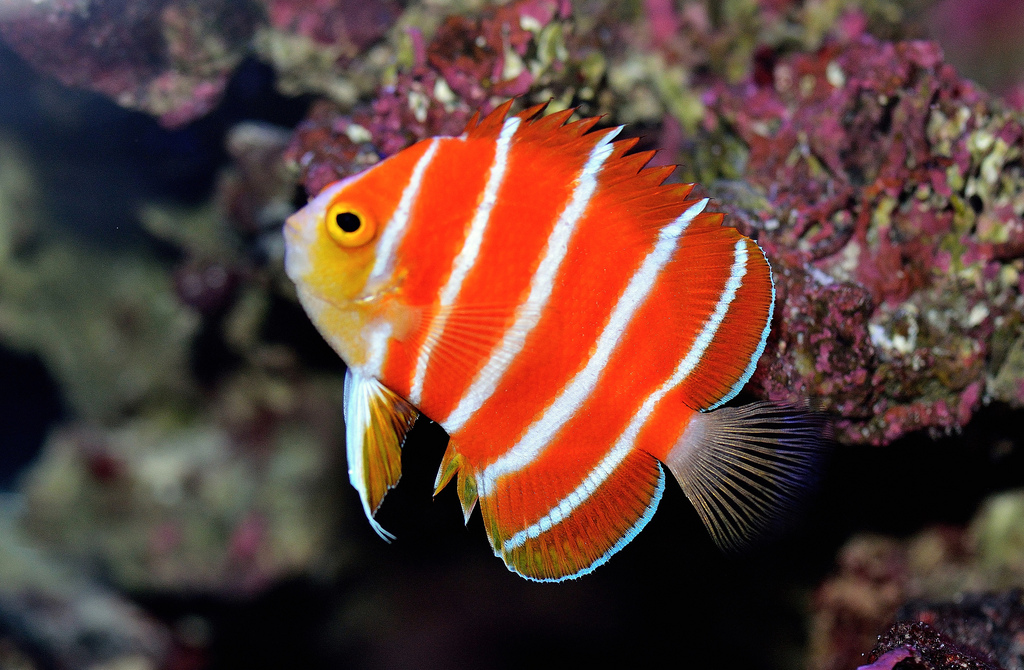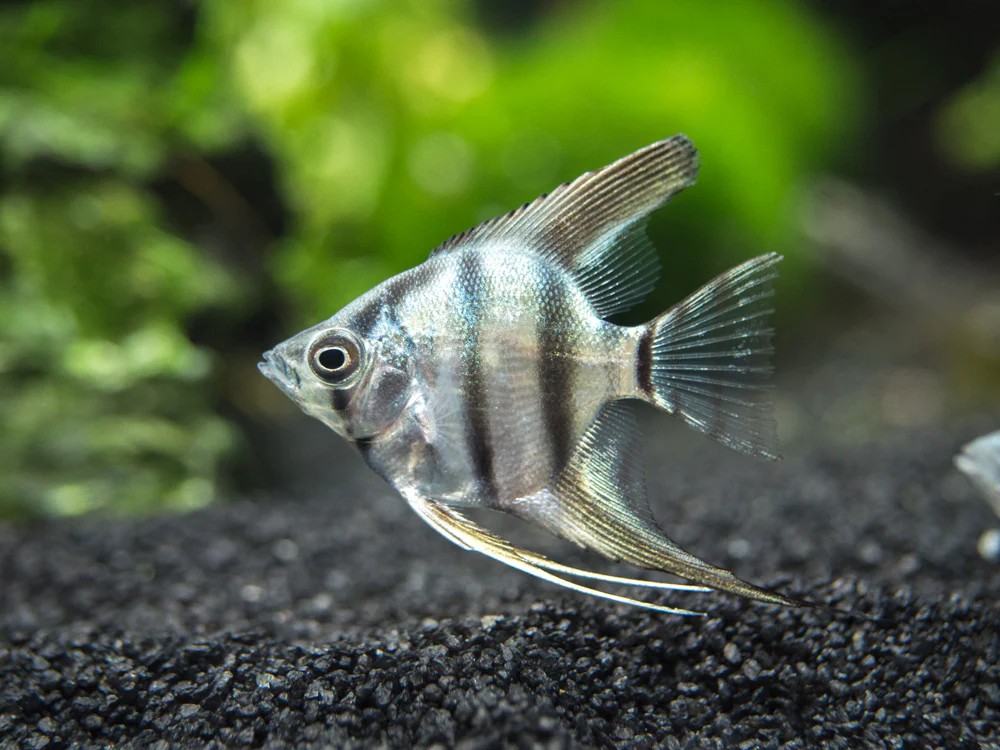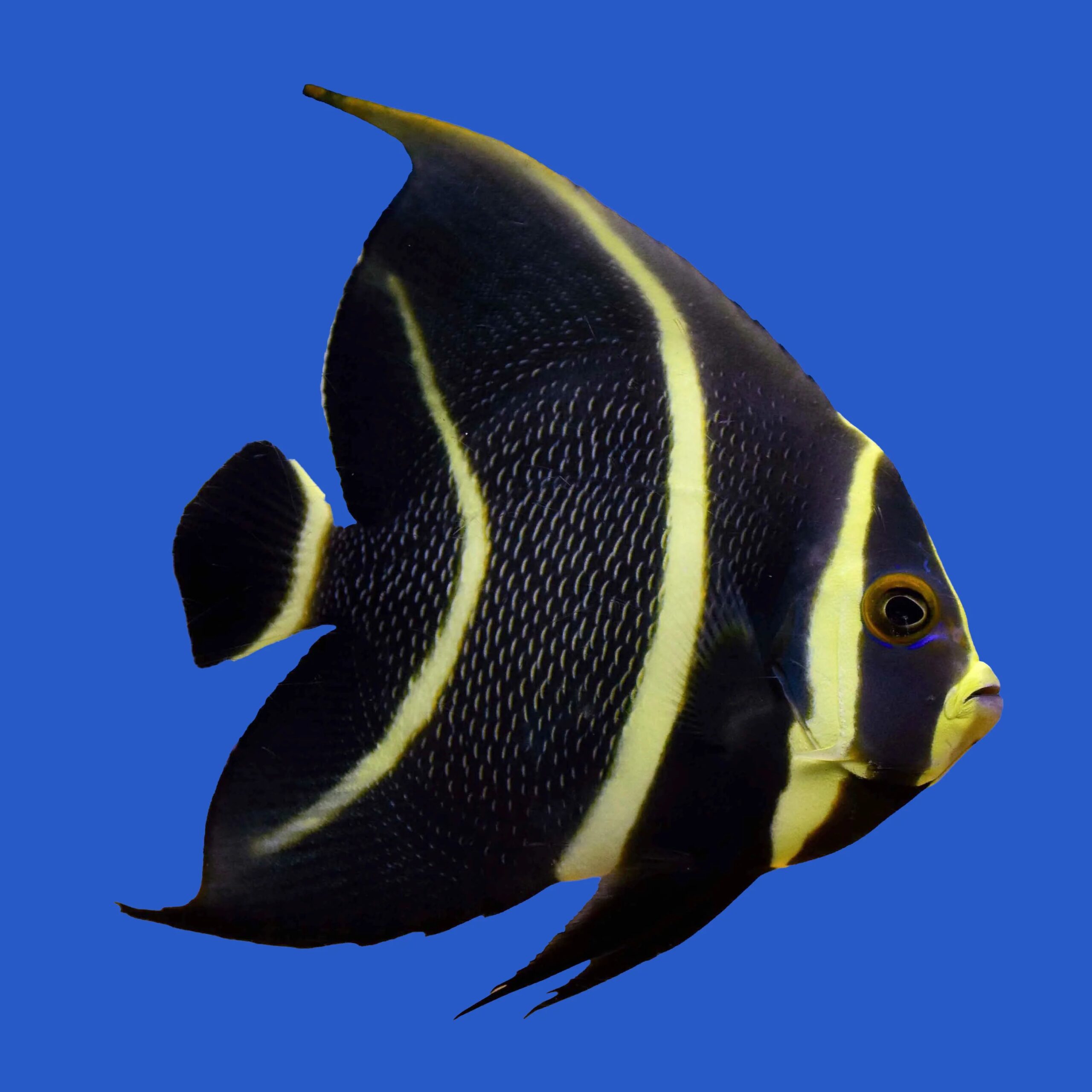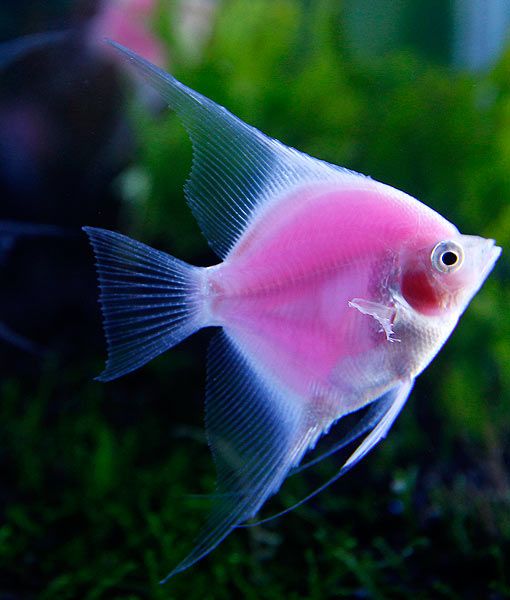One of the most splendid of all tropical aquarium inhabitants is the Angelfish. This is a popular opinion when people first consider keeping tropical fish. Though they can be fragile when small they grow up to be relatively hardy fish and, with proper care, should thrive in your aquarium. Here we discuss Angelfish care, feeding and breeding.
Angelfish Tankmates
Growing to about a foot in height, Angelfish need plenty of space, so make sure your aquarium is big enough for them. They should be kept singly or in shoals of four or more, as smaller groups will result in dominance battles and bullying. As they are by nature predatory you should avoid keeping them with small fish like guppies and neon tetra, but otherwise, they get along well in community tanks. However, if you want to breed your Angelfish, you are likely to have more success if you separate them. They can be aggressive in defense of their young and may then represent a danger to other fish.

Due to their unusual shape, Angelfish often struggle to move around in aquariums with strong water flow, so relatively still water is recommended. They are generally happy in gravel bottomed tanks but should be given a bare bottomed tank for breeding. It is important to make sure that the bottom of the tank is a dark color and that the tank has a background picture, as this will make your Angelfish feel more secure.
Types of Angelfish
You will probably hear other aquarists talking about marine Angelfish, but these are not true Angelfish, which are members of the cichlid family. True Angelfish live in freshwater, usually at about 26ºc. There are several varieties suitable for aquariums.
- Silver – These are the most popular Angelfish, with vertically striped black and white bodies. They are comparatively hardy and adaptable.
- Black Lace -These look similar to silver Angelfish but have a lace-like pattern on their fins.
- Black -Solid velvety black in color, these striking fish are more delicate than their kin, especially when young.
- Pearl Scale -These fish have distinctive bumpy scales which give them a striking texture and have variable colors.
- Blushing -These distinctive fish have red cheeks on white bodies. They can be delicate and are vulnerable to disease in community tanks.
- Veiltail -Available in a range of colors, these fish have very long, trailing fins. They can be fragile and are vulnerable to nipping by other fish.

Feeding Your Angelfish
Angelfish are omnivorous but do best on a diet that contains plenty of meat. Variety is important. They will happily accept flake food but also benefit from freeze-dried foods like brine shrimp, bloodworm, tubifex, and plankton. Some aquarists recommend giving them a weekly treat of black worms. Live food should only be provided if it is from a reliable source, as Angelfish can be particularly vulnerable to parasites which can be introduced in this manner.
Angelfish Breeding and Spawning
Male Angelfish would usually develop humps on the head

Angelfish are comparatively easy to breed. However, it can be difficult (even for experts) to tell males from females, so your best bet is to watch them closely and let them pair off naturally. They are more likely to breed if they have good water quality and plenty of space. They will carefully prepare a spawning site (usually a clean, flat surface) and will guard their fry after hatching. It is important to protect them from stress at this stage so that they don’t panic and eat their young. For this reason, they should be given as much privacy as possible.

Provide plenty of leathery plants life Anubis for breeding.
Striking to look at and fascinating in their habits, Angelfish make a fine addition to the tropical aquarium and are a choice you won’t regret.